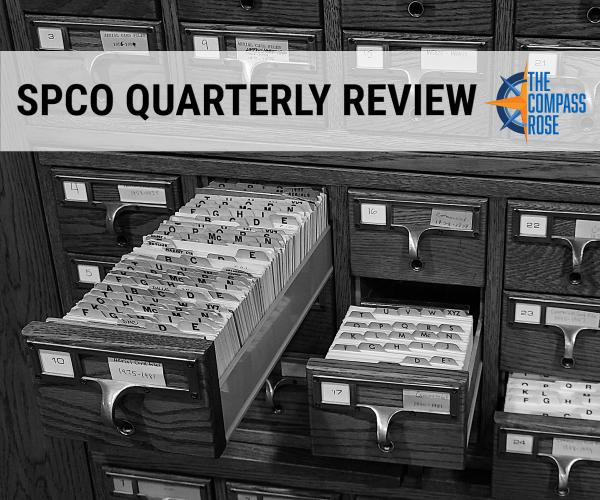
by Sara Pezzoni


by Sara Pezzoni
The purpose of The Compass Rose is to raise awareness of Special Collections' resources and to foster the use of these resources. The blog series also reports significant new programs, initiatives, and acquisitions of Special Collections.
This is the newest in an ongoing series spotlighting new acquisitions and reproductions of our content. For more on our previous featured material, read our previously published Quarterly Review blogs.
Special Collections is continually acquiring new materials and image reproductions of items from our collections are regularly used in new publications and by media outlets. This post reviews where and how materials from our collections are being used around the world in July, August, and September of 2022.
We've recently received a generous donation of astronomy-themed books and maps from Donald Sheff. Both maps seen below were produced by cartographers Johann Gabriel Doppelmayr and Johann Baptist Homann. Doppelmayr was a German mathematician, astronomer, and cartographer whose works covered sundials, spherical trigonometry, and celestial maps and globes. In the early 1700s, Doppelmayr prepared a number of astronomical plates that had appeared in Homann's atlases, which in 1742 were collected and issued as Atlas Coeslestis. Homann, a well-known German mapmaker, was best known for his heavy detailing in graving in his copper plates as well as the distinctive allegorical cartouche designs and hand-coloring.
Above at left is Hemisphaerium Coeli Australe (1730) by Doppelmayr and Homann, a celestial chart of the Southern Skies showing illustrated constellations and stars. The constellations include Orion, Scorpio, Taurus, Eridanus, and the Southern Cross. The constellations include some unusual additions, including the Peacock, Toucan, and a unicorn called Monoceros. The corners of the chart are decorated with vignettes of the astronomical observatories at Greenwich, Copenhagen, Cassel, and Berlin.
Above at right is Tabula Selenographica (1742), also by Doppelmayr and Homann, a lunar map according to Johannes Hevelius (left) and Giovanni Baptista Riccioli (right). Different lunar phases are represented between the two images and additional lunar phases are represented in the four corners. The upper right quadrant features Diana, goddess of the moon, and in the upper left quadrant are cherubs using a telescope.
Special Collections acquired Joseph Moxon's A Map of all the Earth and how after the Flood it was divided among the Sons of Noah (1681) that illustrates the view of the world as it was known at the time. Moxon was one of the earliest compilers of sea charts. This world map was designed by Moxon for an English edition of the Bible, depicting the map area in an oval projection surrounded by scenes from the Old and New Testaments. These include the Creation of the World, the Tower of Babel, Moses and the Ten Commandments, and the Crucifixion. The general map shows how the world was divided up among the sons of Noah after the Flood. California is still shown as an island and Australia only partially. The countries and areas are named using a legend with 78 entries.
We have acquired a small collection of 26 photographs of cattle ranching in the Fort Davis/Davis Mountains area [circa the 1920s], that depicts cowboys, horses, cattle roundup/branding, sheep shearing, ranch buildings, and the surrounding scenery. The 1880s brought a number of cattle ranchers to the area, many fleeing a Texas fever epidemic in other parts of the state. Ranching and tourism have been the main industries in Jeff Davis County since its founding and ranching remains an important element of the local economy today.
Official records of the UTA Movin' Mavs wheelchair basketball team were donated to Special Collections, which included photographs, ephemera, and digital media from the 1990s-present. This donation supplements our existing UTA Movin' Mavs Records collection, digitized items from which can be viewed on the UTA Libraries Digital Gallery or the Texas Disability History Collection website. The sport of wheelchair basketball was introduced to UTA in 1976 and the team, which started as the "UTA Freewheelers," began intercollegiate competition in 1988. They were the first Intercollegiate Wheelchair Basketball Team to be invited to meet the President of the United States, as most other National Champs are honored, in 1993. In its history, the team has won nine National Intercollegiate Wheelchair Basketball Tournament (NIWBT) national championships.
We've recently received a donation from UTA's Native American Student Association (NASA), the longest continuously running student group in Texas that supports Native American interests. NASA donated a screen print on vellum depicting the RAH-66 Comanche and OH-58 Bell Kiowa helicopters to Special Collections. The tradition of naming helicopters after Native Americans was once an official Army regulation from the late 1940s that required Army aircraft to be named after "Indian terms and names of American Indian tribes and chiefs" and names to choose from were provided by the Bureau of Indian Affairs. That regulation no longer stands, but the tradition continues. Of particular interest in this print is the depiction of the OH-58 Bell Kiowa, which was first officially received at a ceremony held at Bell Helicopter's Fort Worth plant in May 1969.
Records from the Society of Professional Journalists, Fort Worth Chapter (chartered in 1946) were donated to Special Collections to supplement our existing collection from the Chapter, which was donated in 1996. The Society, a non-profit professional organization for journalists, originated from the journalism fraternity, Sigma Delta Chi. The collection includes correspondence, minutes, financial records, by-laws and constitution, membership records, annual reports, newsletters, newspapers, plaques, photographs, scripts, and audio & video tapes of the Chapter and the Texas Gridiron Club. Materials span over forty years, from 1950-1996, and include items relating to the Gridiron Club dinners and shows, the annual Gridiron-produced newspaper, Yellow Jaundice, and various organizational records of the Fort Worth Chapter of the Society of Professional Journalists.
Students from a variety of classes and organizations visit Special Collections to engage in experiential learning activities using our unique materials. Visits this quarter have included History, Art History, Spanish, African American Studies, Mexican American Studies, and English classes. Pictured below at left is a Historical Research Methods (HIST3300) class that visited Special Collections to engage in a “20 Minute Historian” activity. Students from the class critically analyzed primary sources both individually and as a group, and then came up with a historical argument, or thesis statement, about the sources on the table. A Spanish class (SPAN3318), pictured below at right, also visited in September to analyze Mexican and Mexican American political cartoons in issues of El Malcriado, the United Farm Workers’ newspaper, held in Special Collections.
TARO (Texas Archival Resources Online) makes descriptions, or "finding aids," of the rich archival collections in repositories across the state available to the public. Finding aids assist users in locating information in our collections and serve as a descriptive guide to the unique materials only available here in Special Collections. Here are our most recent finding aid uploads to TARO:
Materials found within Special Collections’ holdings have been used across a wide variety of outlets, including (but not limited to) features in local news stories, on television shows, printed in publications, and used in public exhibitions. Below are some examples of where and how our materials have been used this quarter.
The Fort Worth Star-Telegram collection, which came in increments to UTA Libraries from 1984 to 1999, is often used in a variety of news articles and columns published by the original donor, the Fort Worth Star-Telegram. This quarter, the Star-Telegram used photographs from the collection for 18 stories:
Other local news outlets published the following stories using our collection materials:
Exhibit titled Fort Worth and the Green Book, displayed at the Fort Worth Museum of Science & History, February-October 2022; images used from the Fort Worth Star-Telegram Collection and W. D. Smith Commercial Photography, Inc. Collection
Visit The Compass Rose in December for our next quarterly blog review!
Add new comment